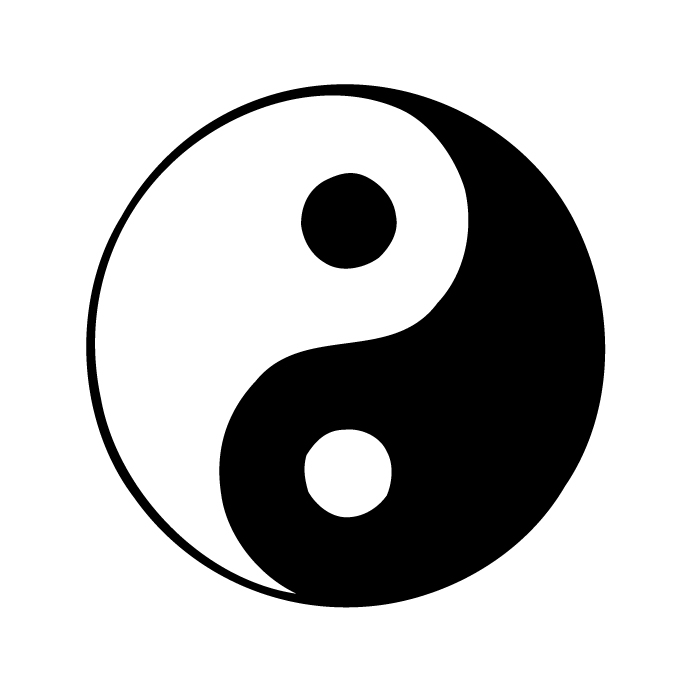Yin-yang << yeen yang >> is a central concept (idea) in East Asian cultural history. It originated in ancient China and became fully developed in the 200’s and 100’s B.C. The words yin and yang mean the north-facing, shady side of a mountain (yin) and the south-facing, sunny side (yang).

The concept of yin-yang involves two complementary forces or principles. When they merge, these forces form a complete whole. The concept often is illustrated as an intertwining swirl of black and white or black and red, a symbol known as a taiji tu << ty gee tu >> . According to early Chinese sources, the complementary forces of yin-yang show up in various binary (two-part) forms in the world—dark and light, Earth and Heaven, water and fire, night and day, winter and summer, female and male, passive and active, receiving and giving, below and above, death and life, and many others. In each example, the first part represents yin and the second, yang.
Yin-yang is not a balance between two exclusionary opposites, each shutting out the other, as often is claimed in popular Western cultural sources. Rather, it represents an interdependent or interlinked motion, a process of continuous change and transformation, called hua, that underlies the functioning of the cosmos (orderly universe). The idea behind yin-yang may best be explained using the concrete example of the cyclical change from day to night. As day turns to night, the sun (yang) gives way to the moon (yin). Likewise, as night turns to day, the moon disappears and the sun rises again. The sun and moon are not opposites, but rather two sides of the same process of continuous change, from day to night and back again.
The origins of the concept of yin-yang can be traced to ancient China. The concept grew to its greatest importance during the Han dynasty (206 B.C.-A.D. 220). From that time, it became a central idea of many divinatory (future-telling), political, religious, and early scientific practices in East Asia. Such practices include Chinese traditional medicine , feng shui (the Chinese art of placing things), the Chinese martial art t’ai chi ch’uan (also spelled taijiquan), and various Taoist (also spelled Daoist) rituals. Yin-yang served as a fundamental governing principle for explaining the creation, functioning, and organization of the universe in premodern East Asia. Those who mastered an understanding of yin-yang through a lengthy process of practical training were thought to gain the power of predicting events or even controlling the universe. Over time, the concept of yin-yang spread from China through Japan, Korea, and Vietnam to the Western world.
